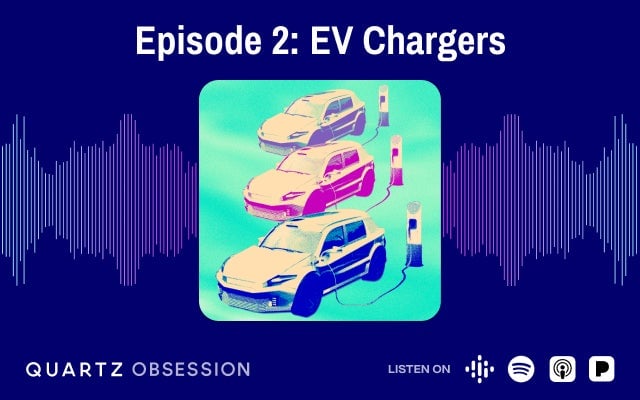🌎 A year of $5 meals
Plus: Inflation rebates for drugs.

Good morning, Quartz readers!
Suggested Reading
Here’s what you need to know
The Biden Administration is trying out inflation rebates for drugs. Between July 1 and Sept. 30, Medicare will lower the prices of 64 select drugs for some Medicare recipients.
Related Content
Nvdia’s stock bounced back after losing over $500 billion in market value. Even with the recovery, it’s still trailing Apple and Microsoft after eclipsing them just last week. Meanwhile, Amazon hit $2 trillion in market cap for the first time.
Summer’s heating up and so are food recalls. The U.S. Food and Drug Administration is recalling products from dozens of ice cream brands, including Hershey’s and Yelloh! The agency is also recalling hundreds of coffee products over contamination concerns.
Federal regulators said the toxic smoke fiasco from the Norfolk Southern train derailment could have been avoided. The National Transportation Safety Board said in a new report that a “vent and burn was not necessary to prevent a tank car failure.”
Rivian and Volkswagen’s $5 billion joint venture has Wall Street giddy. The two companies are working together to produce cheaper EVs.
One $5 meal deal, a year in the making
If you think McDonald’s new $5 meal deal is fresh off the grill, think again.
The fast food chain has been piloting the promotion for a year in upstate New York, where franchisees were the brains behind the bundle.
The $5 meal formally launched this week, and is expected to last for about four more. Joe Erlinger, McDonald’s U.S. president, said during the Wall Street Journal Global Food Forum in Chicago yesterday that the bundle is one way the fast food chain is responding to American outrage over inflation.
But it’s not the only way McDonald’s hopes it can win back diners — and it may need new innovation with Wendy’s, Starbucks, and Burger King all promoting their own bargains.
Do you have range anxiety?

Powering an electric car or truck is designed for people with private garages or who live in a major city with lots of accessible charging stations. Rural and suburban apartment dwellers can’t just run cords out their three-story windows to juice up their rides through a 140-volt outlet. That would take days.
If we want any shot at transitioning to greener vehicles, how can we turbo-charge access to EVs for everyone? In episode 2 of the Quartz Obsession podcast, season 8, host Rocio Fabbro gets the answers from Quartz reporter William Gavin in EV Chargers: The geographic forces driving electric vehicle adoption.
🎧 Listen on: Apple Podcasts | Spotify | Pandora
👓 Or, read the transcript
Surprising discoveries
The Atlantic Ocean has a lot of something green that is actually bad for U.S. environmental plans. It’s sand, and it could stand in the way of installing wind turbines.
While we’re on the topic of the environment: Hot weather is getting to Abe’s head. A wax sculpture of former President Abraham Lincoln couldn’t stave off the sunbeams of Washington, DC.
But maybe taxing cow farts will help rein in emissions that warm the globe? Farmers in Denmark will soon have to start paying a carbon monoxide emissions tax.
People don’t know how to cut avocados. At least not well enough to avoid ER visits for an injury so common that surgeons have their own name for it.
The robots are getting real(er)? Researchers are working on “living skin” which could help bots appear more human-like, and even smile like humans.
Did you know we have two premium weekend emails, too? One gives you analysis on the week’s news, and one provides the best reads from Quartz and elsewhere to get your week started right. Become a member or give membership as a gift!
Our best wishes for a productive day. Send any news, comments, wax to fix Abe, and tax to fix the world to [email protected]. Today’s Daily Brief was brought to you by Francisco Velasquez and Morgan Haefner.